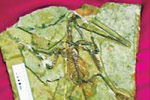Art
The world in a grain of sand
Updated: 2007-10-23 14:00
(chinaculture.org)
Millions of grains of sand are painstakingly laid into place on a flat platform over a period of days or weeks, creating an overwhelmingly beautiful painting. When finished, to symbolize the impermanence of all that exists, the colored sands are swept up and poured into a nearby river or stream where the waters carry the healing energies throughout the world.
In Tibetan this art is called dul-tson-kyil-khor, which literally means "mandala of colored powders."
 |
|
Tibetan Buddhist ritual art of sand. |
A symbol of wholeness
Traditionally, Tibetan Buddhists use sand mandalas as visualization aids for meditation during certain religious ceremonies.
 |
The subject of a Tibetan sand painting is known in Sanskrit as a mandala, or cosmogram, of which there are many types. The mandala represents an imaginary palace that is contemplated during meditation.
Each object in the palace has significance, representing an aspect of wisdom or reminding the meditator of a guiding principle. The mandala's purpose is to help transform ordinary minds into enlightened ones and to assist with healing. Every tantric system has its own mandala, and thus each one symbolizes a particular existential and spiritual approach.
Procedures to Create Sand Mandalas
The mandala sand painting process begins with an opening ceremony, during which the lamas consecrate the site and call forth the forces of goodness. The monks chant and dance in resplendent dress.
The lamas begin the work by drawing an outline of the mandala on the wooden platform, which takes the entire day. The following days see the laying of the colored sands, which is done by pouring the sand from traditional metal funnels called chak-pur. Each monk holds a chak-pur in one hand while running a metal rod on its grated surface; the vibration causes the sands to flow like liquid.
 |
 |
 |
 |
 |
 |
 |
 |
Traditionally most sand mandalas are destroyed shortly after their completion. This is done as a metaphor for the impermanence of life. The sands are swept up and placed in an urn; to fulfill the function of healing, half is distributed to the audience, while the remainder is carried to a nearby body of water, where it is deposited. The waters then carry the healing blessing to the ocean, and from there it spreads throughout the world for planetary healing.
Specials

President Hu visits the US
President Hu Jintao is on a state visit to the US from Jan 18 to 21.

Ancient life
The discovery of the fossile of a female pterosaur nicknamed as Mrs T and her un-laid egg are shedding new light on ancient mysteries.

Economic Figures
China's GDP growth jumped 10.3 percent year-on-year in 2010, boosted by a faster-than-expected 9.8 percent expansion in the fourth quarter.